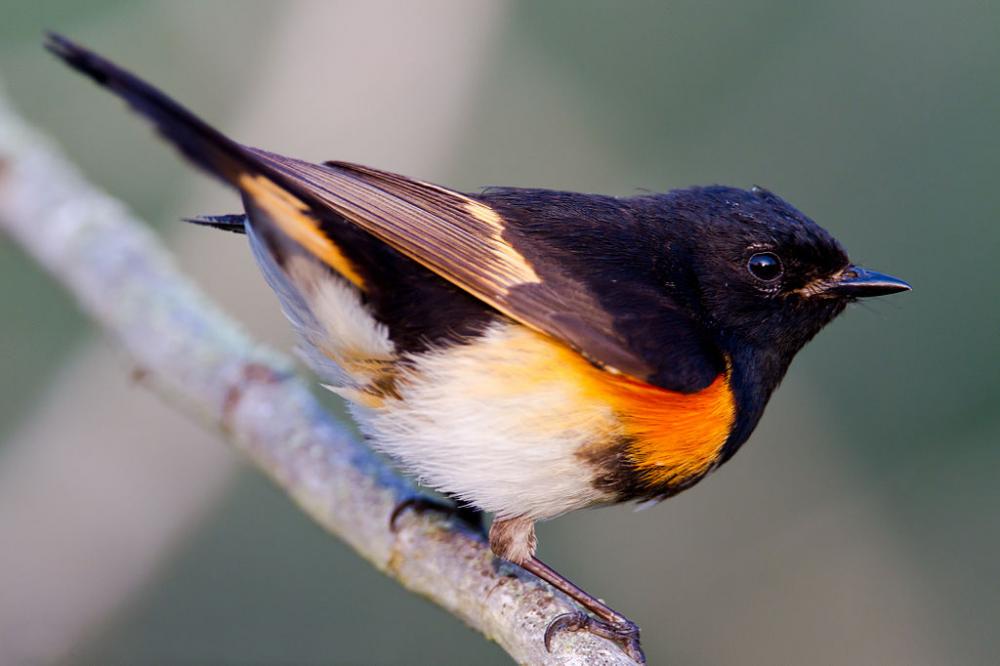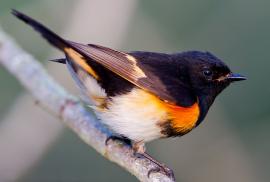Guide to Boreal Birds
Overview
This is one of the most numerous warblers in North America, because its favored habitat, second-growth woodland, covers such extensive areas of the continent. The American Redstart has a distinctive habit of dropping down suddenly in pursuit of a flying insect, then fanning its brightly marked tail from side to side. Only after a full year do males acquire the black-and-orange adult plumage, so it is not unusual to find what appears to be a female singing and displaying like a male.
Description
4 1/2-5 1/2" (11-14 cm). Male black with bright orange patches on wings and tail; white belly. Females and young birds dull olive-brown above, white below, with yellow wing and tail patches.
Voice
5 or 6 high-pitched notes or 2-note phrases, ending with an upward or downward inflection: chewy-chewy-chewy, chew-chew-chew.
Nesting
4 dull-white eggs, speckled with brown, in a neat, well-made cup of grass, bark shreds, plant fibers, and spiderweb lined with fine grass and hair, and placed in a fork in a sapling or next to the trunk of a tree.
Habitat
Second-growth woodlands; thickets with saplings.
Range/Migration
This extremely widespread species is a late migrant, not reaching the southern states until mid-April, but some individuals reach their northern breeding locations by mid-May. American Redstarts seldom stop for more than a day during their spring migration. Evidence from banded bird recoveries indicates the following migration trends: western breeding populations winter in Mexico, birds that breed in the central part of North America winter in Central America and western South America, and those that breed in the eastern states winter in northern South America and the Caribbean. Mature males show a tendency to winter farther north than females and young males.
Breeds from southeastern Alaska east to central Manitoba, Quebec, and Newfoundland, and south to northern California, Colorado, Oklahoma, northern Louisiana, and South Carolina. Winters in California, Texas, and Florida, and in tropics.



